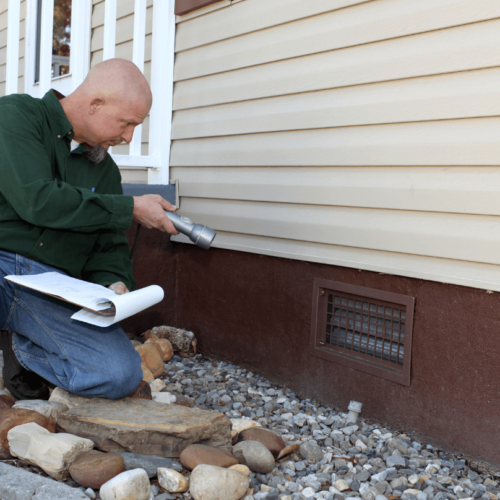Why You Shouldn't Ignore Cracks in Your Foundation or Walls

Cracks in your foundation or interior walls might seem like minor cosmetic issues, but they can be early warning signs of serious structural problems that could cost tens of thousands of dollars to repair if left unchecked.
Understanding Different Types of Cracks
Not all cracks are created equal. Understanding the difference between harmless settling cracks and serious structural issues can save you both money and stress. Here's what you need to know about the most common types of cracks found in Florida homes.
Hairline Cracks
These thin cracks, typically less than 1/16 inch wide, often appear in new construction as the home settles. While generally not cause for immediate alarm, they should be monitored for growth over time.
Horizontal Cracks
These are serious. Horizontal cracks in foundation walls often indicate soil pressure or water damage and require immediate professional evaluation. They can signal that your foundation wall is being pushed inward by external forces.
Stair-Step Cracks
Common in block or brick foundations, these cracks follow the mortar joints in a stair-step pattern. They often indicate differential settling and should be evaluated by a structural engineer.
Vertical Cracks
While often less serious than horizontal cracks, wide vertical cracks (over 1/4 inch) or those that are growing should be professionally assessed.
Immediate Red Flags
- • Cracks wider than 1/4 inch
- • Any crack that's growing or changing
- • Horizontal cracks in foundation walls
- • Cracks accompanied by doors/windows sticking
- • Water seepage through cracks
- • Cracks with displacement (one side higher than the other)
Florida-Specific Foundation Challenges
Florida's unique geology and climate create specific challenges for home foundations:
Sandy Soil Conditions
Much of Florida sits on sandy soil, which can shift and settle unpredictably. This is particularly problematic during the rainy season when soil becomes saturated and loses stability. Sandy soil also provides less support than clay or rocky foundations found in other regions.
Limestone and Sinkholes
Central Florida's limestone bedrock is prone to erosion from underground water flow, creating cavities that can lead to sinkholes. Even small underground voids can cause differential settling that manifests as cracks in your foundation or walls.
Extreme Weather Patterns
Florida's dramatic wet and dry seasons cause soil to expand and contract significantly. This constant movement puts stress on foundations, particularly those not properly designed for these conditions.
High Water Tables
Many areas of Florida have high water tables, meaning groundwater sits close to the surface. This can lead to hydrostatic pressure against foundation walls and increase the risk of water infiltration through cracks.
The Hidden Costs of Ignoring Cracks
What starts as a minor crack can quickly escalate into a major structural problem. Here's what can happen when foundation issues are left unaddressed:
Progressive Structural Damage
Small cracks allow water infiltration, which accelerates deterioration. Over time, this can lead to:
- Weakened foundation integrity
- Uneven floors throughout the home
- Doors and windows that won't close properly
- Cracked interior walls and ceilings
- Compromised load-bearing capacity
Water Damage and Mold
Foundation cracks provide entry points for water, leading to:
- Basement or crawl space flooding
- Mold and mildew growth
- Damaged flooring and walls
- Poor indoor air quality
- Expensive remediation costs
Financial Impact
The cost of foundation repairs increases exponentially over time:
- Early intervention: $500 - $3,000
- Moderate damage: $5,000 - $15,000
- Severe structural issues: $20,000 - $50,000+
- Complete foundation replacement: $50,000 - $100,000+
When to Call a Professional
While minor hairline cracks might be monitored by homeowners, certain situations require immediate professional evaluation:
- Any crack wider than 1/4 inch - This indicates significant movement
- Cracks that are growing - Document with photos and measurements over time
- Multiple cracks appearing simultaneously - Could indicate broader structural issues
- Cracks accompanied by other symptoms - Sticking doors, uneven floors, or plumbing problems
- Water infiltration - Any crack that allows water entry needs immediate attention
Prevention and Monitoring
Regular Inspections
Walk around your home's foundation at least twice a year, looking for new cracks or changes in existing ones. Take photos and measurements to track any growth over time.
Proper Drainage
Ensure gutters and downspouts direct water away from your foundation. The ground should slope away from your home, and consider installing a French drain system if water accumulation is a persistent problem.
Maintain Consistent Moisture Levels
In Florida's climate, try to maintain consistent soil moisture around your foundation. During dry periods, consider soaker hoses to prevent soil from pulling away from the foundation.
The Bottom Line
Foundation and wall cracks are your home's way of telling you something is wrong. While not every crack signals immediate danger, they all deserve attention and monitoring. In Florida's challenging climate and geological conditions, early intervention can save you tens of thousands of dollars in repair costs.
Don't wait until minor cracks become major structural problems. When in doubt, consult with a qualified structural engineer or experienced home inspector who understands Florida's unique construction challenges.
Concerned About Cracks in Your Home?
Our experienced inspectors can evaluate structural cracks and provide expert recommendations for addressing potential foundation issues.
